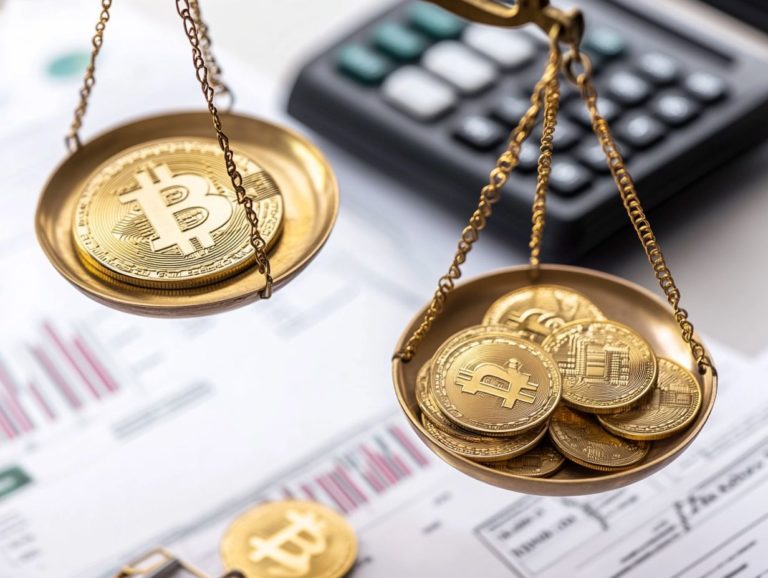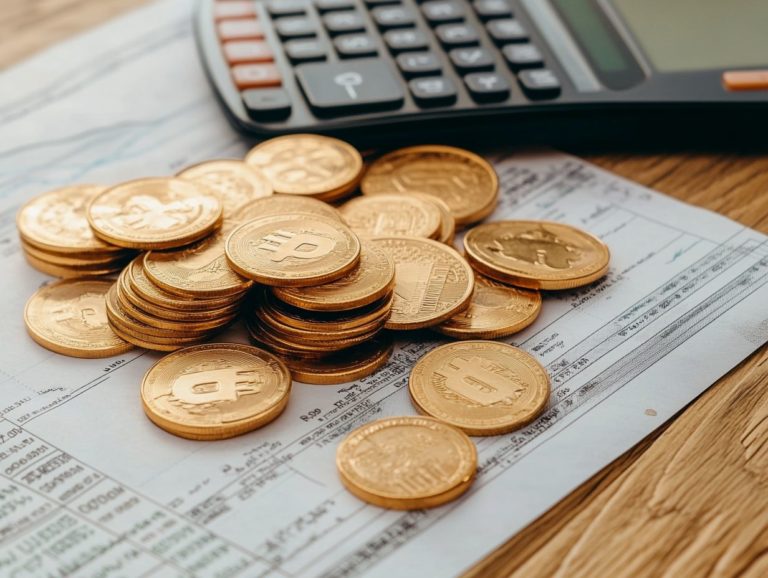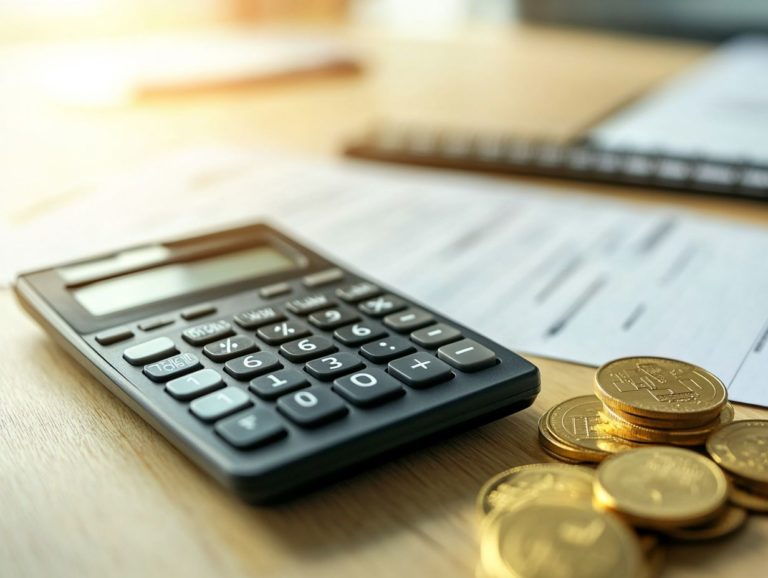How to Navigate Tax Implications of Precious Metals
Investing in precious metals presents a lucrative opportunity! It’s crucial for you to understand the tax implications that come with it.
This article will outline everything you need to know, from the various types of metals and their respective tax treatments to key tax considerations when buying and selling.
You ll discover tax-advantaged investment options such as IRAs and 401(k)s! You ll also learn effective tax planning strategies and best practices for reporting transactions to the IRS.
By the end, you ll be well-prepared to navigate the complexities of precious metals investing with confidence.
Contents
- Key Takeaways:
- Mastering Tax Implications of Precious Metals!
- Types of Precious Metals and Their Tax Treatment
- Buying and Selling Precious Metals: Tax Considerations
- Tax-Advantaged Ways to Invest in Precious Metals
- Tax Planning Strategies for Precious Metals
- Reporting Precious Metal Transactions to the IRS
- Frequently Asked Questions
- What are the tax implications of buying and selling precious metals?
- Are there any tax advantages to investing in precious metals?
- Are there any tax reporting requirements for owning precious metals?
- Can I use precious metals to offset my taxable income?
- How do I calculate the value of my precious metals for tax purposes?
- Are there any tax-exempt ways to invest in precious metals?
Key Takeaways:
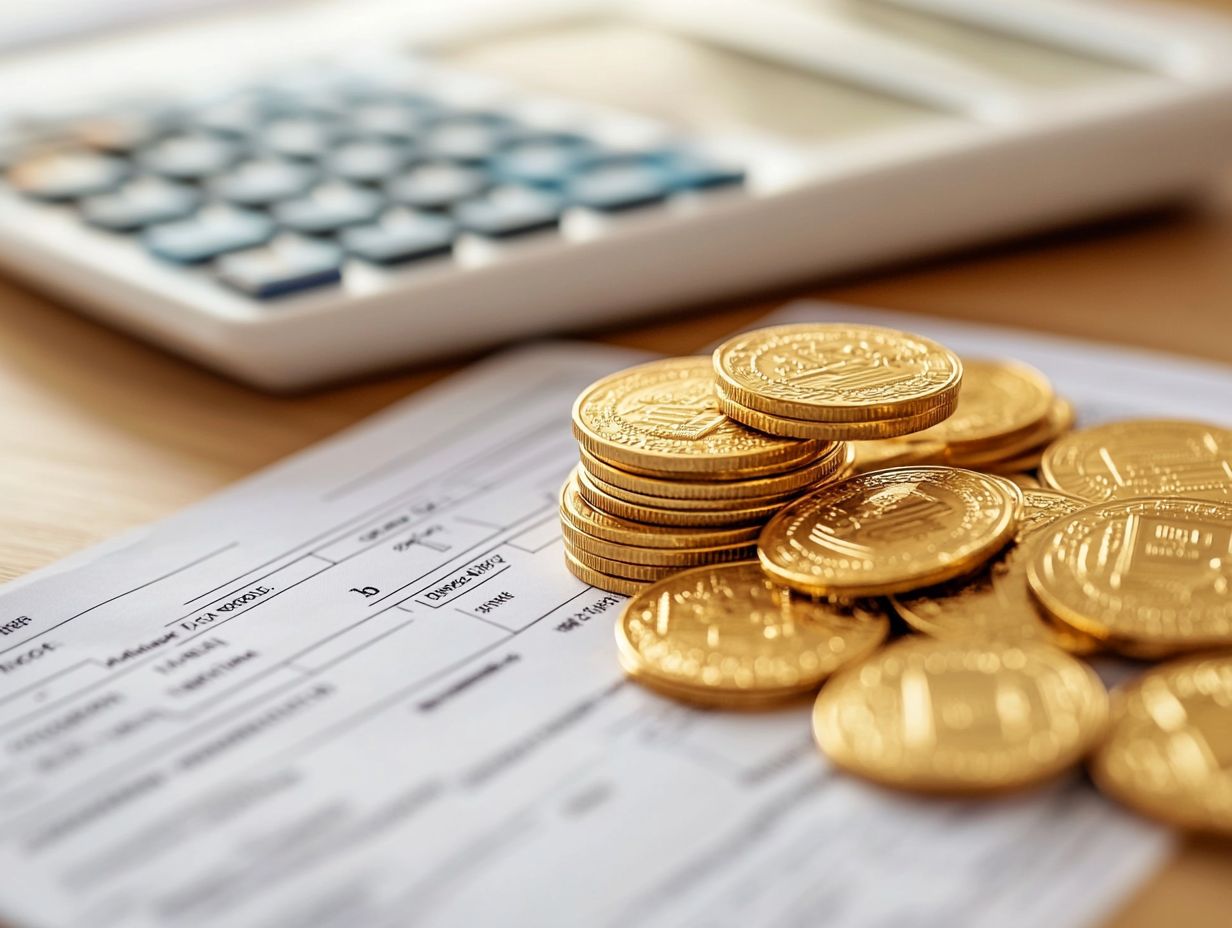
- Understand tax implications as they vary by metal and transaction method.
- Consider IRAs and 401(k)s to potentially reduce taxes.
- Always report transactions to the IRS to avoid penalties.
Mastering Tax Implications of Precious Metals!
Understanding the tax implications of precious metals like gold, silver, platinum, and palladium is essential for you as an investor. The complex world of taxation in the United States has many regulations and potential liabilities tied to capital gains the profit made from selling an asset and sales tax.
Understanding the historical context surrounding taxation on precious metals can offer valuable insights into current tax management strategies and any tax breaks that may apply. This overview empowers you to make informed decisions about your investments in these precious assets!
Overview of Taxes on Precious Metals
The taxation of precious metals involves a complex web of regulations that can significantly influence your investment outcomes and overall tax situation.
Understanding these various taxes is essential for making well-informed decisions. Sales tax might apply when you purchase precious metals, and this can differ by region, ultimately affecting your total acquisition costs.
Once you decide to sell, capital gains tax kicks in, impacting the profits you’ve gained from your investment. Tax management can make a big difference! Savvy investors often seek out tax breaks and deductions to help lower their liabilities.
In some jurisdictions, wealth tax may also apply based on the total value of precious metals you hold. This highlights the importance of staying informed about current regulations and actively seeking opportunities for tax optimization.
Types of Precious Metals and Their Tax Treatment
Various precious metals such as gold, silver, platinum, and palladium come with distinct tax treatments that can significantly impact your investment decisions, whether you re an individual investor or representing an institution.
Gold, Silver, Platinum, and Other Metals
Gold, silver, platinum, and palladium are key precious metals you might consider. Each has its unique characteristics and tax implications.
The tax consequences associated with these metals can greatly affect your investment decisions. For example, gold is often viewed as a safe haven and may be taxed at a higher rate compared to silver, which has varied classifications in different jurisdictions.
This distinction can influence how you strategize your portfolio. Additionally, the ever-changing market values of these precious metals can lead to different capital gains tax outcomes. Carefully consider the timing of your purchases and holding periods to maximize tax efficiency. Grasping these nuances is crucial for optimizing your investment returns.
Buying and Selling Precious Metals: Tax Considerations
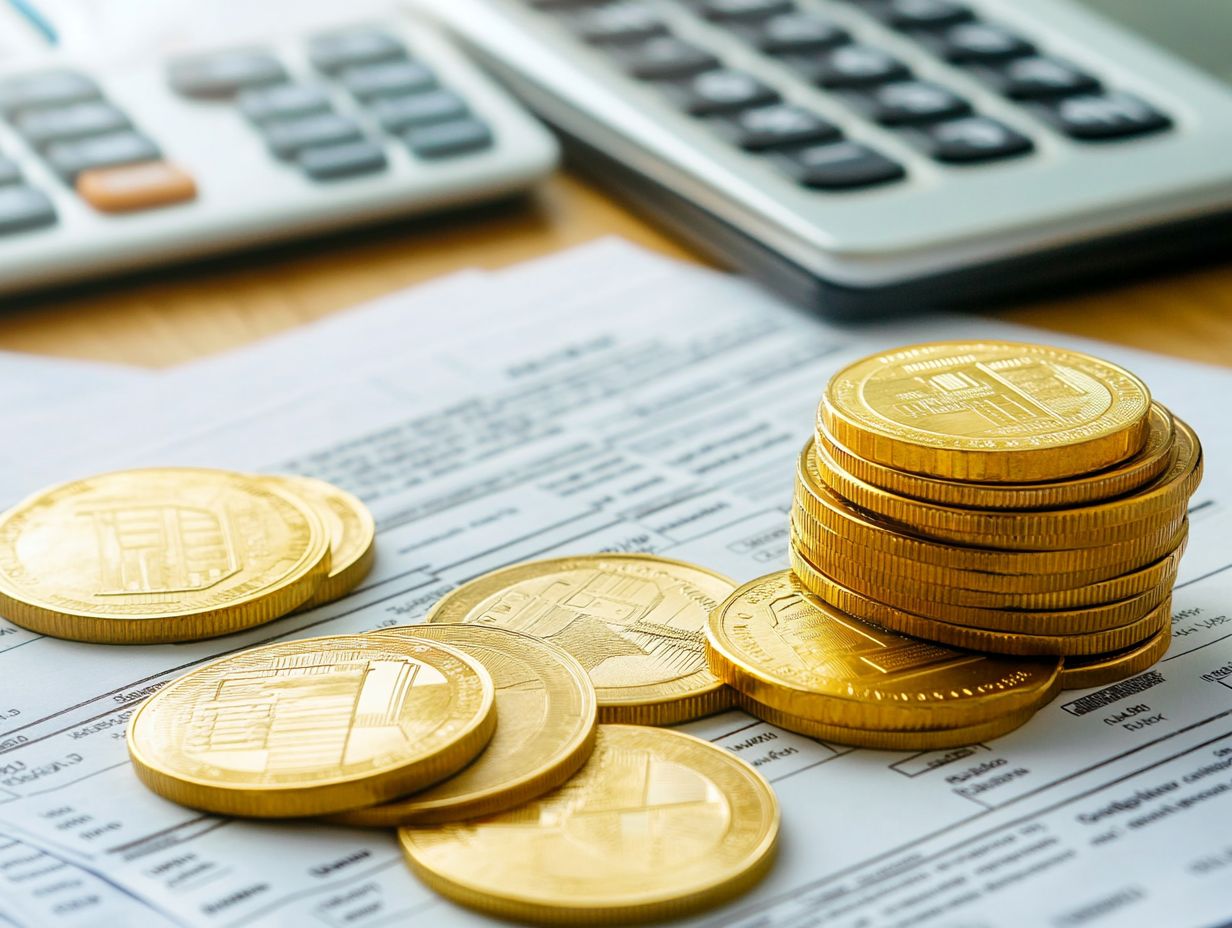
When you engage in buying and selling precious metals, understanding the tax considerations especially those related to capital gains is crucial. This knowledge empowers you to optimize your returns while effectively managing your tax liabilities.
Capital Gains and Losses
Capital gains and losses from precious metals transactions can significantly impact your tax situation. This ultimately influences your overall profitability.
Understanding how these gains are calculated is essential, as they hinge on the difference between your purchase and selling prices of the metals. It’s important to know that the IRS considers bullion and coins collectibles, which can result in a higher tax rate of up to 28% for long-term holdings.
Maintaining meticulous records of your transactions is crucial. Accurate documentation will help you determine your exact cost basis, which is your total investment in the asset, and any potential capital losses.
You might also want to explore strategies such as holding assets for over a year to take advantage of lower long-term capital gains rates. You can offset gains with any applicable losses from other investments to minimize your overall tax liabilities.
Tax-Advantaged Ways to Invest in Precious Metals
Investing in precious metals through tax-advantaged accounts such as IRAs and 401(k)s offers you significant advantages. This enables you to navigate tax implications with greater ease and efficiency.
This strategic approach can significantly boost your investment portfolio and optimize your tax outcomes, paving the way for a more prosperous financial future.
IRA and 401(k) Options
Both IRA and 401(k) options present unique opportunities to incorporate precious metals into your retirement portfolio while reaping significant tax advantages.
These investment vehicles empower you to diversify your assets by adding gold, silver, platinum, and palladium elements often regarded as a safeguard against inflation and market volatility. It s crucial to understand that the IRS has specific regulations regarding these investments, including which metals qualify and the necessity of storing them in an approved depository.
By taking advantage of tax exemptions, such as those on capital gains when your holdings are maintained within a tax-deferred account, you can considerably boost your long-term financial growth. Understanding these nuances will enable you to make informed decisions and optimize the tax benefits associated with your precious metal investments.
Tax Planning Strategies for Precious Metals
By employing effective tax planning strategies for precious metals, you can significantly minimize your tax burden while maximizing your investment outcomes in a complex tax environment.
This approach can significantly boost your returns and ensures that you navigate the tax rules with confidence and sophistication.
Minimizing Taxes on Precious Metal Investments

You can employ several strategies to minimize taxes on your precious metal investments, particularly regarding capital gains and effective tax management.
By taking advantage of tax-advantaged accounts, like IRAs specifically tailored for precious metals, you can significantly enhance your tax efficiency. Understanding the intricacies of capital gains is vital since different rates may apply depending on how long you’ve held your investments. Additionally, it’s important to consider the tax implications of selling precious metals to a dealer.
You can also leverage available tax exemptions to strengthen your financial strategies, ensuring that more of your earnings stay in your pocket. These approaches not only aid in reducing tax liabilities but also enhance your overall returns. It’s essential to navigate the tax landscape with care and insight.
Start planning your investments wisely today to secure a better financial future!
Reporting Precious Metal Transactions to the IRS
Accurate reporting of precious metal transactions to the IRS is crucial for compliance. It can significantly impact the tax implications for investors.
Carefully documenting every detail will safeguard you from potential penalties. It will also enhance your overall financial strategy.
Requirements and Best Practices
Understanding how to report precious metal transactions is essential for compliance. This knowledge helps you avoid penalties.
Familiarity with these regulations makes transactions easier and boosts your confidence during audits. Keep thorough records, including invoices, receipts, and identification verification.
Report transactions within 15 days if they exceed certain thresholds. This keeps you transparent with the IRS.
Engaging tax professionals experienced in precious metals can streamline the process. They can help you avoid unintentional oversights and create a strong management strategy for your valuable assets.
Frequently Asked Questions
What are the tax implications of buying and selling precious metals?
Buying and selling precious metals can lead to tax implications based on your situation. Generally, profits from sales are subject to capital gains tax, which is a tax on profit.
If you hold precious metals for over a year, you may qualify for a lower tax rate on those gains, but it’s important to understand the tax consequences of buying precious metals abroad.
Are there any tax advantages to investing in precious metals?
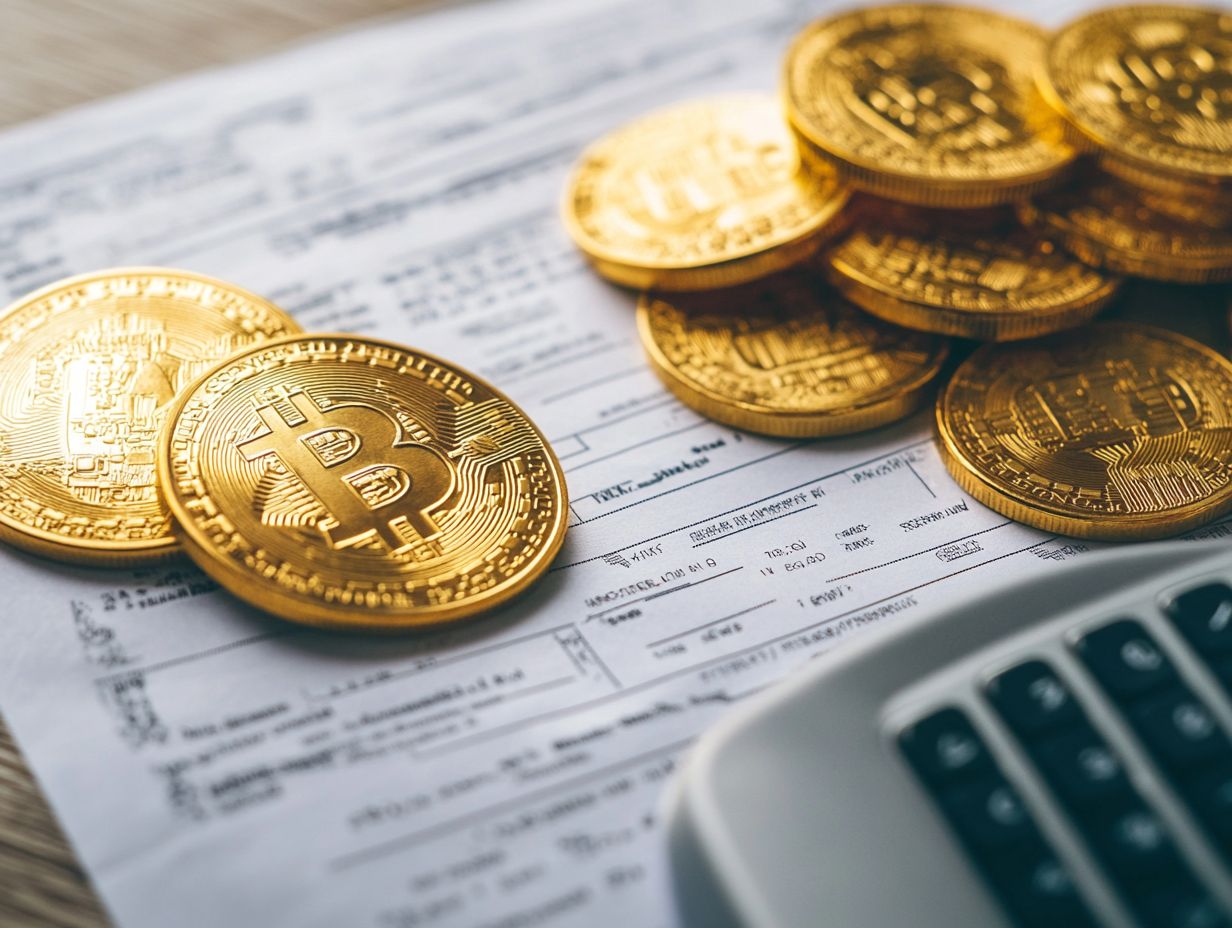
Yes, investing in certain precious metals can offer tax benefits. For example, gold and silver are classified as collectibles by the IRS and are taxed at a maximum rate of 28%.
Are there any tax reporting requirements for owning precious metals?
If you buy or sell more than $10,000 worth of precious metals in one transaction, you must report it to the IRS using Form 8300. If you hold precious metals in a foreign account, report this on your tax return.
Can I use precious metals to offset my taxable income?
Yes, losses from selling precious metals may help offset taxable income. This can reduce your overall tax liability.
How do I calculate the value of my precious metals for tax purposes?
Value is based on the fair market price at the time of purchase or sale. Check the current market price for accurate assessment.
Keeping accurate records of purchases and sales is vital for tax purposes.
Are there any tax-exempt ways to invest in precious metals?
Yes, you can invest in a self-directed IRA, which allows for precious metal investments. This option offers tax advantages like tax-deferred growth.












